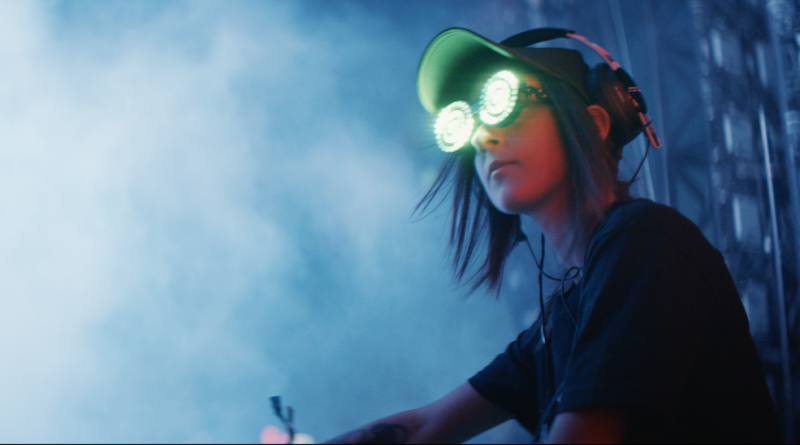
The comment “there’s just something about her I don’t like” written to Canadian DJ and producer Rezz is misogyny disguised as vague criticism. It’s something said over and over in reference to female politicians and female filmmakers, but the film Underplayed shows we can add female electronic musicians to the list of professionals similarly dissed or dismissed.
With her feature debut, New Zealand documentarian Stacey Lee shines a (strobe) light on women in the electronic music space, focusing on several well-known pioneers, as well as women who were part of the 7% listed on 2019’s “Billboard Top 100 DJs”. If that number seems shocking, note the more intersectional the performer, the worse the numbers get. Though genres like house and techno evolved out of LGBT, Black, Brown, and Latino communities, the highest paid and best represented performers don’t reflect that history. In fact, type in the names of any of the female musicians highlighted in this documentary into Apple music, and under ‘similar artists’, in nearly every case you’ll find all those listed are men.
Underplayed begins by covering some of what Lee calls “ the pioneering godmothers of electronic music”, like Clara Rockmore, Susanne Ciani, Delia Derbyshire, and Wendy Carlos, and their often unheralded importance to music history. Michelle Moog-Koussa, of the Bob Moog Foundation, says her father offered Rockmore, the most famous and storied virtuosa of the Theramin in history, a Theramin made by him, and she told him his weren’t as good as those made by Theramin himself, so he used her as a guide to better his own circuitry. We see footage of Wendy Carlos in her studio in the 50s, complete with her two siamese cats, and as one of the most knowledgable electronic musicians, she too inspired Moog for his designs. According to Moog-Koussa, women play a big role in the invention of electronic instruments.
For the full review, go to AWFJ.org HERE.



